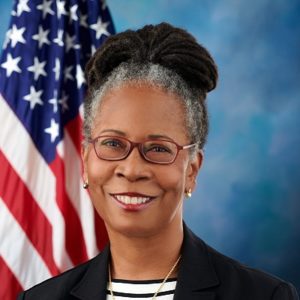

As we approach the end of 2023, I am reflecting on all that the Social Security Administration has accomplished, despite considerable challenges. It’s been my great privilege to lead Social Security’s approximately 60,000 employees for the past two and one-half years, and I’m so proud of the work they’ve done to fulfill our mission.
For more than 85 years, Social Security has provided income protection for retirees, adults and children with disabilities, and families who lose a wage earner. In order to pay benefits, we also issue millions of Social Security Numbers (SSN), maintain the country’s wage records, and more. The scope of what we do is enormous, and we are proud to serve the public every day. Despite our recent history of chronic underfunding, Social Security remains among the most trusted agencies in the Federal Government.
Social Security’s top priority is, and always will be, working to provide high-quality, timely customer service. Social Security employees deliver approximately $1.4 trillion in benefits to more than 70 million people each year. Each week, our employees serve over 500,000 people in over 1,000 offices across the country.
Despite insufficient budgets, we have prioritized business, policy and technology improvements to serve you better. For visitors to our local field offices, we expanded mobile check-in and instituted an online scheduling system for people who need an appointment for a Social Security card. We also updated our check-in kiosks to make them more accessible and improve the overall check-in process.
Our redesigned website, launched in December 2022, is easier to navigate, more task-oriented, and offers more self-service options and increased digital services, making it easier for people to apply for benefits and replacement SSN cards. Customers can start—and often complete—their SSN card requests and applications for certain benefits online, and our new Office of Transformation recently introduced an online tool that will allow customers to electronically sign and upload certain documents. These improvements allow millions of people to complete their business online quickly and securely, saving time for our customers and freeing up more time for our employees to help customers with more complex needs in-person and process more cases.
Despite these efforts, the combined effect of the pandemic and chronic underfunding have taken a toll on our employees. It has led to high attrition and backlogs. Our budget directly drives the level of service we can provide. Bottom line, we need enough well-trained employees to ensure we can meet your needs. New hires are necessary to begin to reduce growing backlogs and improve service. I am pleased that the funding we received in fiscal year (FY) 2023 allowed us to hire nearly 8,000 employees in the past year, but we must be able to maintain this staffing level. Using targeted strategies, we have also reduced the backlog of hearings to a 21-year low and began to address the backlog of initial disability claims. With sustained and sufficient funding consistent with the President’s FY 2024 budget request, I’m confident that we can build on our progress and retain the best qualified workforce.
We continue working to improve equity and access for all customers through partnerships and policy initiatives. Our newly established Office of Native American Partnerships is piloting mobile services by sending SSA employees to health facilities in remote locations and improving video service delivery in Tribal communities. We’ve also worked with the Biden-Harris Administration and other agencies to promote Economic Impact Payments, the Affordable Connectivity Program, and Child Tax Credits, so our customers could learn about and benefit from these programs without affecting their Social Security benefits or Supplemental Security Income payments.
To make it easier for people seeking benefits from Social Security to obtain legal representation, we increased our representative fees for the first time in 13 years and conducted outreach to the unrepresented to help them prepare for hearings. We are simplifying our disability redetermination and overpayment notices so they’re shorter, easier to understand, and less burdensome for our customers. We also made significant progress toward simplifying our rules around in-kind support and maintenance and past relevant work, in order to reduce burdens on both applicants and employees. We developed Social Security’s first comprehensive Limited English Proficiency policy to help customers with little or no understanding of English access our information and services. Further, we regularly meet with advocates, experts, and other external stakeholders to listen and gather feedback on our efforts to continuously improve.
Social Security remains a trusted program and agency, one that the public increasingly relies on. We’ve added at least 8 million more beneficiaries in the past 10 years alone. It’s imperative that we can sustain and support our workforce, improve our customers’ experience, communicate clearly with the public, and hone our policies and procedures to provide the service the public expects and deserves. With sufficient and sustained financial support from Congress, Social Security can continue to build on our accomplishments in 2024 and many years to come.